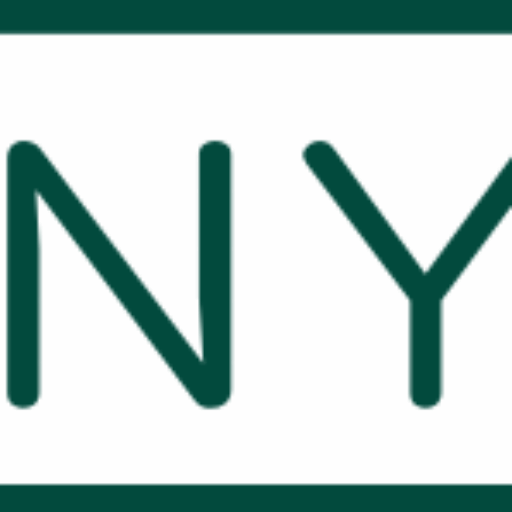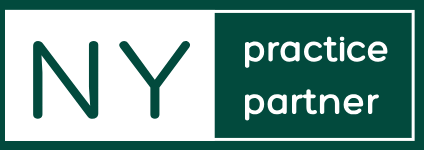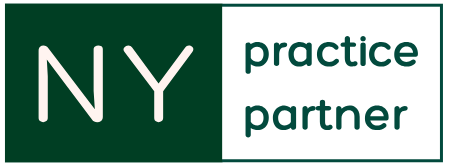insurance enrollment so You
can focus on patient care.

Streamline Credentialing for Your Practice
Get affiliated with more payers, grow your patient base, and boost your practice’s profitability.
Maximize your participation with top insurance payers and attract more Medicare patients to your practice. Avoid cash flow disruptions and eliminate the stress of denied claims or enrollment backlogs.
We handle everything — from initial credentialing submissions to ongoing payer follow-ups — saving you time, reducing errors, and accelerating revenue cycles. As one of the most trusted healthcare credentialing companies, NY Practice Partner keeps you informed at every step.
Get affiliated with maximum payers
Why Choose Us?
NY Practice Partner offers fast, reliable, and expert medical credentialing services that help healthcare providers get enrolled with insurance payers quickly and accurately. We reduce administrative burden, minimize delays, and ensure full compliance — so your practice can focus on patient care, not paperwork. With personalized support and real-time updates, NY Practice Partner is the trusted choice for streamlined payer enrollment and faster reimbursements.
Accelerate Revenue
Save Time
Reduce Stress
How We Help?
Comprehensive Suite of Physician Credentialing Services
Government Program Enrollment
Medicare and Medicaid Provider Enrollment: Ensure you can offer services to eligible beneficiaries under these crucial government programs.
Medicare DMEPOS Enrollment: Specialized support for providers offering durable medical equipment, prosthetics, orthotics, and supplies (DMEPOS)
Essential Registrations
NPI Registration: We handle both Type I (individual providers) and Type II (organizations) registrationsCAQH Profile:
We create and maintain your Council for Affordable Quality Healthcare (CAQH) profile, simplifying data collection for participating health plansPECOS:
We manage your Medicare Provider Enrollment, Chain, and Ownership System (PECOS) portal
Licensing and Certification
State license application and renewal: We certify compliance with regulatory frameworks in specific jurisdictions
U.S. DEA certificate processing: We enable healthcare providers to prescribe and handle controlled substances
CLIA registration: We guide you through compliance with federal quality standards for laboratory testing set by the Clinical Laboratory Improvement Amendments (CLIA)
Get Started with Medical Credentialing
Whether you’re a physician starting your first credentialing application or an administrator managing credentialing for a large organization, CureMD helps guide you through the credentialing process.
Documents for Individuals
Malpractice insurance (Certificate of Insurance)
DEA (federal) and state CDS certificates.
Practitioner licenses
Board certifications
Current driver's license
Current CV showing current employer
Diploma copy proving your highest level of education
Other Necessary Documents May Include
Documents Needed for Your Legal Entity
FAQs – Credentialing
1 – How long does the credentialing process take?
The credentialing and contracting process varies by insurance carrier. Major commercial insurers typically take 90 to 120 days to complete the full enrollment process. However, smaller carriers or specialized plans may take longer.
Once a participation request is submitted, providers must complete two key steps:
1. Credentialing – The insurance carrier verifies the provider’s qualifications, licenses, and background. This information is reviewed by a credentialing committee for approval.
2. Contracting – After credentialing approval, the provider enters into a contractual agreement with the payer, and an effective date is assigned for participation.
It’s important to note that commercial insurance carriers do not permit retroactive billing. Providers can only be reimbursed for services rendered after they are officially listed as in-network in the payer’s system. Until that time, services may be considered out-of-network, which can lead to significantly higher costs for patients—often leaving them responsible for the full bill.
Staying on top of these timelines is critical to maintaining steady revenue and patient satisfaction. Let NY Practice Partner manage this complex process for you—accurately, efficiently, and with full transparency.
2 – How long does it take to enroll with Medicare?
Medicare enrollment typically takes 60 to 90 days, though processing times may vary by state. One key advantage of enrolling with Medicare is that the effective date is retroactive to the date the application is received. This allows providers to bill for services rendered during the application period. Additionally, there is a 30-day grace period that permits billing for services provided up to 30 days prior to the official effective date.
For DMEPOS (Durable Medical Equipment, Prosthetics, Orthotics, and Supplies) providers, the enrollment process takes longer due to enhanced scrutiny. In addition to standard credentialing requirements, DMEPOS suppliers must undergo a mandatory site inspection. This inspection verifies:
• The physical location matches the application address
• The hours of operation are clearly posted
• Inventory is properly stored and accounted for
• Compliance with all supplier standards
The additional steps involved make DMEPOS enrollment more complex and time-consuming, but ensuring accuracy and compliance from the start helps prevent costly delays or denials.
At NY Practice Partner, we manage the entire Medicare and DMEPOS enrollment process for you—accurately, efficiently, and in full compliance with CMS guidelines
3 – How does NY Practice Partner speed up the credentialing process?
While NY Practice Partner cannot speed up insurance carriers’ internal processing times, we streamline and expertly manage the entire credentialing and enrollment process from start to finish. From preparing and submitting initial applications to performing diligent follow-ups with payers, our team ensures every detail is handled accurately and on time.
Our credentialing specialists are deeply familiar with the nuances of payer requirements, helping providers avoid costly mistakes and delays that often occur when navigating the process alone. By partnering with us, your practice saves time, avoids administrative frustration, and stays focused on delivering exceptional patient care.
4 – Does a practice need to have a service location to begin credentialing?
However, a home address may be used as a billing or correspondence address, as long as a valid physical practice location is also listed on the application.
If the office space is still under construction or not yet operational, the future practice address can still be submitted. Most commercial insurance carriers and Medicare allow credentialing applications to be filed up to 30 days prior to the official opening date.
At NY Practice Partner, we help ensure your application meets all payer-specific location requirements to prevent delays and denials during the credentialing process.
5 - How to complete Medicare Revalidation?
Individual providers can complete the revalidation process by submitting the CMS-855I paper application or using Medicare’s online PECOS (Provider Enrollment, Chain, and Ownership System) for faster processing.
Providers must respond to their Medicare Administrative Contractor (MAC) within 60 days of receiving the revalidation notice. Failure to respond on time may result in deactivation of Medicare billing privileges, potentially disrupting cash flow and patient services.
For group practices or supplier organizations, the CMS-855B application is required. If the group has not previously established an electronic funds transfer (EFT) for payments, one must be set up during the revalidation process.
At NY Practice Partner, we handle Medicare revalidations efficiently, ensuring accuracy, compliance, and on-time submissions to protect your practice from disruptions in reimbursement.
6 – What type of Medicare application is used for Provider enrollment?
To elect participation in Medicare, providers should also submit the CMS-460 form. Without this form, providers may be enrolled as non-participating, which results in lower reimbursement rates from Medicare. While non-participating providers can bill patients directly—up to 115% of the Medicare-approved amount—this may reduce patient access and complicate billing.
Providers joining an existing group practice must submit the CMS-855R form, which reassigns their Medicare payments to the group or organization providing the services. Additionally, the CMS-588 form is required to establish an electronic funds transfer (EFT) setup, as Medicare does not issue paper checks.
Summary of Required Medicare Enrollment Forms:
• Solo Practitioner Starting a New Practice:
o CMS-855I
o CMS-460 (participation election)
o CMS-588 (EFT setup)
• New Provider Joining an Existing Group:
o If already enrolled with a Medicare intermediary: CMS-855R
o If not yet enrolled: CMS-855I + CMS-855R
o CMS-460 may be required depending on the group’s enrollment status
At NY Practice Partner, we guide providers through every step of the Medicare enrollment process to ensure accuracy, compliance, and fast reimbursement setup.
7 – What is CP575?
If the original CP575 letter is lost or unavailable, a replacement letter—Form 147C—can be requested from the IRS. Medicare accepts only the CP575 or 147C as valid proof of EIN. No other documentation will be accepted in place of these letters during the credentialing or enrollment process.
At NY Practice Partner, we ensure that all necessary documentation, including EIN verification, is accurately submitted to avoid delays or denials in Medicare enrollment.




